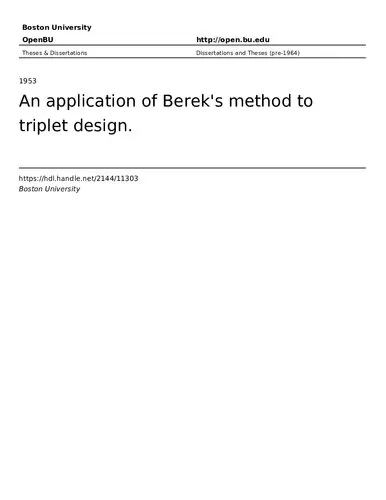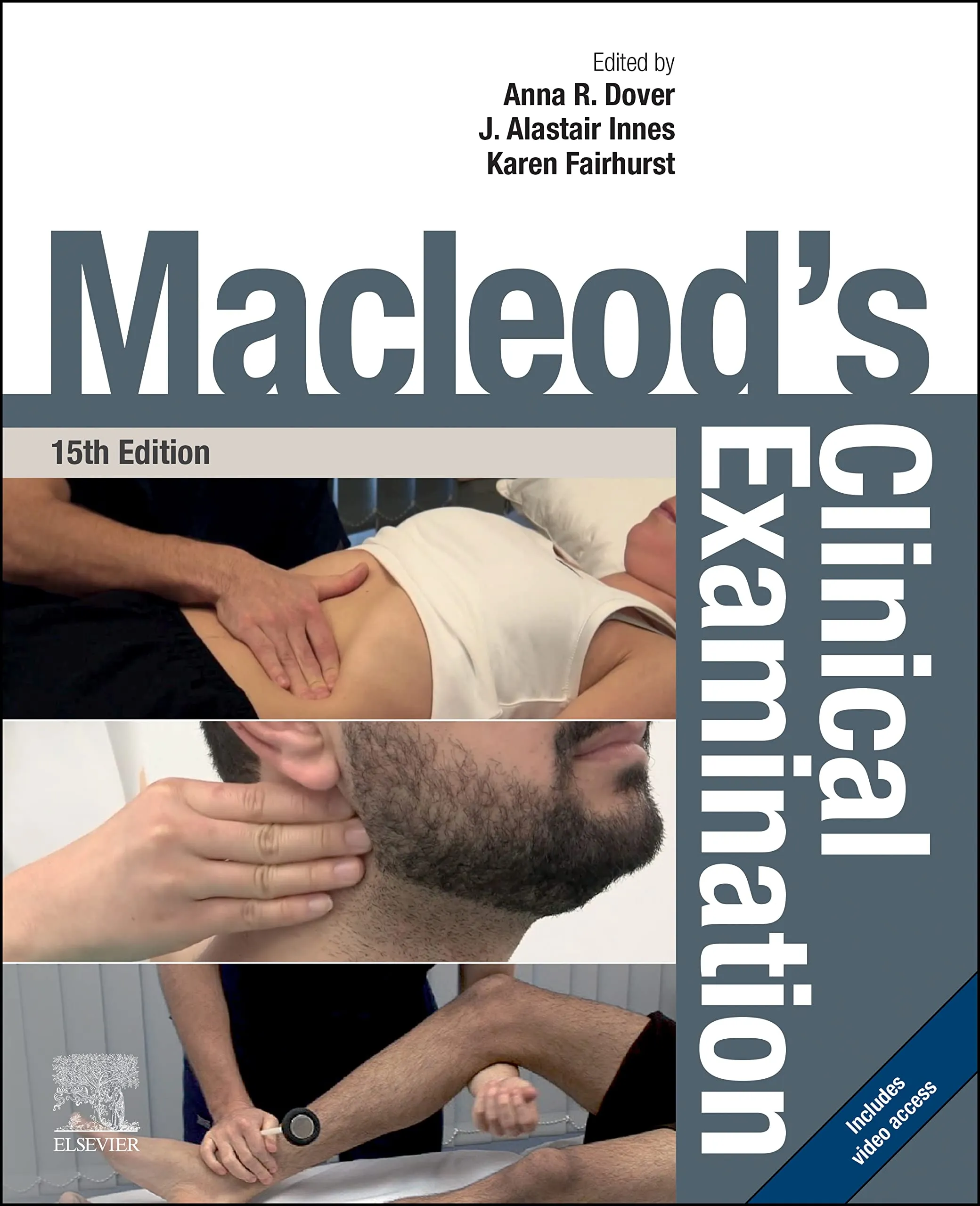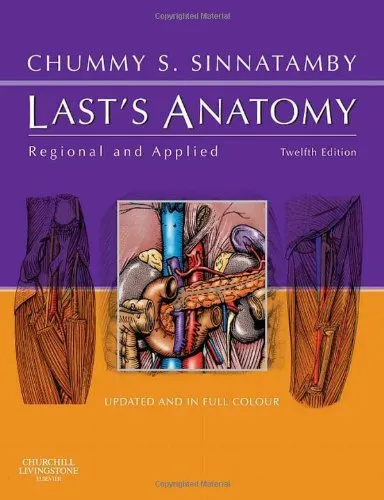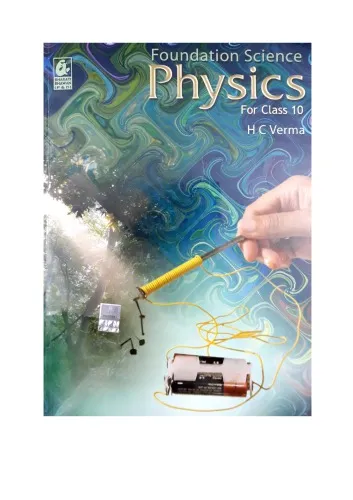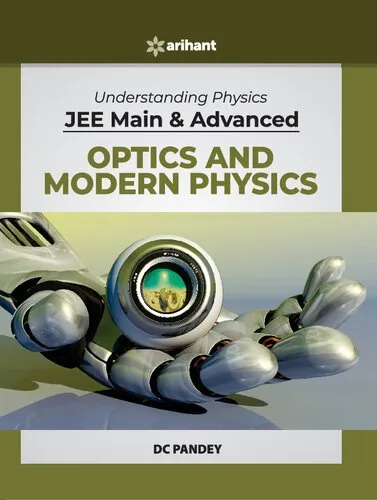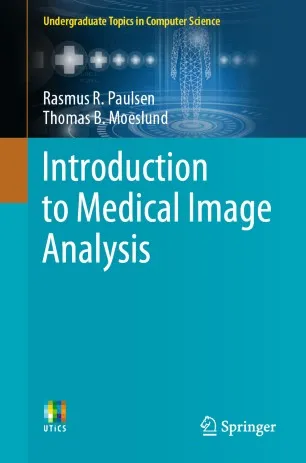لطفا سؤال خود را بنویسید
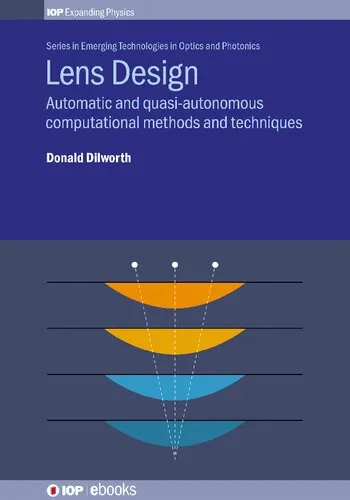
📚 چرا کتاب فیزیکی بخریم؟
- ✅ کیفیت چاپ عالی و کاغذ مرغوب
- ✅ راحتی مطالعه بدون نیاز به دستگاه
- ✅ امکان یادداشتبرداری و هایلایت
- ✅ تحویل سریع در سراسر کشور
⏰ پیشنهاد ویژه!
تا پایان امروز 15% تخفیف برای خرید این کتاب
کد تخفیف: SPECIAL15
قیمت نهایی کتاب
636,000 تومان
شامل چاپ و صحافیلذت ورق زدن یک کتاب واقعی
- سال انتشار: 2018
- صفحات: 526
- اندازه فایل: 107 MB
- زبان: English
- انتشارات: IOP Publishing
- تعداد مشاهده: 221
- امتیاز کاربران: 4.3
-
شابک/ISBN:
0750316098
9780750316095
کلمات کلیدی:

Generate PowerPoint Files with LLM
⚡️SlideGenie is an intelligent educational slide generator (Open Source Repository) that leverages the power of OpenAI API to create engaging presentations and converts Mermaid diagrams into visual assets.
Features:
- AI-powered slide content generation
- Automatic Mermaid diagram to image conversion
- Customizable slide templates
- Multi-language support
- Educational content optimization
Lens Design: Automatic and Quasi-Autonomous Computational Methods and Techniques
4.3
بر اساس نظر کاربران

شما میتونید سوالاتتون در باره کتاب رو از هوش مصنوعیش بعد از ورود بپرسید
هر دانلود یا پرسش از هوش مصنوعی 2 امتیاز لازم دارد، برای بدست آوردن امتیاز رایگان، به صفحه ی راهنمای امتیازات سر بزنید و یک سری کار ارزشمند انجام بدینLens Design: Automatic and Quasi-Autonomous Computational Methods and Techniques
طراحی سیستمهای اپتیکی، الگوریتمهای بهینهسازی لنز
کتاب Lens Design: Automatic and Quasi-Autonomous Computational Methods and Techniques مرجعی علمی برای روشهای محاسباتی پیشرفته در طراحی لنز است.
خلاصه تحلیلی کتاب
کتاب Lens Design: Automatic and Quasi-Autonomous Computational Methods and Techniques تلاشی منسجم و پژوهشمحور است که به بررسی دقیق فرآیندها و الگوریتمهای پیشرفته در حوزه طراحی لنز میپردازد. نویسنده با ترکیب رویکردهای تئوریک و عملی، چارچوبی علمی برای استفاده از روشهای محاسباتی در بهینهسازی پارامترهای لنز ارائه کرده است.
این اثر با رویکردی میانرشتهای، نهتنها به مبانی اپتیک هندسی میپردازد، بلکه تعامل این مبانی با الگوریتمهای نوین مانند Genetic Algorithms، Ray Tracing و Multi-Objective Optimization را نیز روشن میکند. مباحث کتاب به گونهای است که هم برای پژوهشگران تازهکار و هم برای متخصصان باتجربه، ارزشمند و قابل استفاده خواهد بود.
از ویژگیهای برجسته این کتاب، پرداختن به فرآیندهای اتوماسیونشده و شبهخودکار در طراحی لنز است که نقش بسزایی در کاهش خطای انسانی و افزایش سرعت توسعه سیستمهای اپتیکی دارند. با وجود آنکه تاریخ دقیق انتشار اثر (اطلاعات نامشخص، منبع معتبر در دسترس نیست) مشخص نشده، محتوای کتاب همچنان از نظر علمی بهروز و کاربردی است.
نکات کلیدی و کاربردی
آنچه این کتاب را از سایر منابع متمایز میکند، ساختار منظم و توجه ویژه به پیوند میان تئوری و پیادهسازی عملی الگوریتمهاست. تمرکز بر روشهای Automatic و Quasi-Autonomous باعث شده تا خواننده بتواند از مثالها و مطالعات موردی برای پروژههای واقعی بهره ببرد.
بهعنوان نمونه، بخشهایی از کتاب به موضوع انتخاب معیارهای بهینهسازی و محاسبه Trade-off بین متغیرهای مختلف میپردازد که برای طراحی سیستمهای اپتیکی دقیق ضروری است. همچنین بحثهایی پیرامون توسعه نرمافزارهای شبیهسازی لنز و آزمون مدلها، بُعد عملی محتوای کتاب را تقویت میکند.
یکی دیگر از نقاط قوت کتاب، بررسی محدودیتهای رایج در طراحی لنز و ارائه راهکارهای ابتکاری برای عبور از این موانع است؛ موضوعی که بهویژه برای مهندسین اپتیک در صنایع حساس مانند هوافضا و پزشکی ارزش بالایی دارد.
نقلقولهای ماندگار
در میان مباحث تخصصی، نویسنده جملاتی را مطرح کرده که نگاه عمیق او به ماهیت طراحی لنز و نقش محاسبات خودکار را نشان میدهد. این جملات بینش روشنی درباره فلسفه طراحی و استفاده بهینه از منابع علمی ارائه میکنند.
«یک طراحی موفق لنز، نه محصول تصادف، بلکه نتیجه تعامل دقیق دادهها، الگوریتمها و شهود مهندسی است.» نامشخص
«محاسبات خودکار تنها ابزار نیستند، بلکه زبان مشترک آینده در علم اپتیک خواهند بود.» نامشخص
چرا این کتاب اهمیت دارد
همزمان با افزایش نیاز به سیستمهای اپتیکی دقیق و پیچیده، ضرورت استفاده از روشهای محاسباتی پیشرفته بیشازپیش احساس میشود. Lens Design: Automatic and Quasi-Autonomous Computational Methods and Techniques با تمرکز بر این ضرورت، بهشکل هدفمند به آموزش و انتقال تجربه در این حوزه میپردازد.
از صنایع تولید دوربین و تجهیزات تصویربرداری گرفته تا آزمایشگاههای تحقیقاتی در فیزیک و نجوم، نیاز به طراحیهای سریع، دقیق و بهینهسازیشده بهشدت رو به افزایش است. این کتاب پلی میان نظریه و عمل ایجاد میکند که میتواند بهرهوری تیمهای تحقیق و توسعه را بهشکل چشمگیری افزایش دهد.
تلفیق دانش اپتیکی و مهارتهای محاسباتی در این کتاب، آن را به مرجعی منحصربهفرد برای پژوهشگران و دانشجویان پیشرفته تبدیل کرده است. عدم افزودن محتوای غیرموثق و اشارات متکی بر منابع معتبر، اعتبار علمی اثر را تضمین میکند.
- راهنمای جامع بهینهسازی لنز با الگوریتم ژنتیک
- اصول طراحی اپتیک برای کاربردهای صنعتی
- معرفی نرمافزارهای شبیهسازی پیشرفته در اپتیک
Lens Design: Automatic and Quasi-Autonomous Computational Methods and Techniques
optical system optimization, computational photonics
Explore Lens Design: Automatic and Quasi-Autonomous Computational Methods and Techniques with cutting-edge insights in optical engineering.
Analytical Summary
The book Lens Design: Automatic and Quasi-Autonomous Computational Methods and Techniques stands as a carefully structured reference for engineers, scientists, and academic researchers seeking advanced methodologies in optical system creation. Written to bridge theoretical foundations with applied computational strategies, it provides a deeply technical yet accessible exploration of how automatic and semi-automatic algorithms can revolutionize traditional lens design workflows.
By combining rigorous mathematical optics with modern software-assisted optimization, the text introduces readers to both the principles and the practice of computational photonics. This dual approach enables the application of quasi-autonomous techniques to significantly reduce design iteration cycles, improve lens performance, and accommodate complex constraints in real-world projects. Every chapter is designed to demonstrate not only the “how” but the “why” behind each method—ensuring that practitioners understand both the computational processes and the physical implications.
While exhaustive technical detail is a hallmark of this work, it maintains a clear engagement for readers who may be newcomers to fully automated optical workflows. Foundational topics such as aberration theory, optimization algorithms, and optical system modeling are contextualized so that they can serve both a didactic function and an immediate practical application. Information unavailable for certain empirical data points—such as specific publication awards—is transparently noted to preserve factual integrity.
Key Takeaways
Readers will gain a comprehensive toolkit for integrating automation into the highly specialized field of lens design, making the transition from traditional manual methods to state-of-the-art computational approaches.
First, the book delivers a clear roadmap for selecting and applying optimization algorithms tailored to specific lens configurations. Second, it explores how quasi-autonomous methods complement human expertise rather than replace it, serving as intelligent collaborators in the design process. Third, its case studies highlight measurable efficiency gains achieved through algorithmic intervention.
In addition, the principles of computational photonics are laid out in a way that helps professionals future-proof their skillset in a rapidly evolving industry. By understanding the underlying mathematics and system architecture, readers can adapt the book’s methods to both existing optical projects and innovative designs yet to be conceived.
Memorable Quotes
“Automation is not the end of craftsmanship; it is its evolution.”Unknown
“Optical design thrives when computational power meets creative insight.”Unknown
“Quasi-autonomous methods allow the designer's intent to be preserved while extending technical reach.”Unknown
Why This Book Matters
In an era defined by rapid innovation in optical engineering, the techniques covered here empower professionals to operate at the forefront of the discipline.
As optical systems become inseparable from computational resources, knowing how to harness automatic and quasi-autonomous approaches is vital. This book not only preserves the legacy of precise manual design but elevates it with data-driven accuracy and speed. Whether in designing high-performance photographic lenses, advanced imaging systems for scientific use, or tailor-made solutions for industry, the methods detailed in Lens Design: Automatic and Quasi-Autonomous Computational Methods and Techniques offer scalable, adaptable solutions.
By consolidating both established optical theory and emerging computational practices, it becomes an indispensable resource for advancing optical innovation responsibly and effectively.
- Advanced Ray Tracing Fundamentals
- Optimization Methods in Optical Engineering
- Integrating Computational Photonics into Design Workflows
Inspiring Conclusion
Ultimately, Lens Design: Automatic and Quasi-Autonomous Computational Methods and Techniques is both a technical manual and a call to innovation for lens designers who wish to blend science with ingenuity.
Readers are encouraged to dive deep into its analytical models, translate theory into functioning designs, and share their insights with peers. By embracing the structured methodologies and computational efficiencies outlined here, the optical design community can collectively push its boundaries. Now is the time to read, reflect, and discuss these strategies—because the future of lens design will be shaped by those who understand both the tools and the art behind them.
دانلود رایگان مستقیم
شما میتونید سوالاتتون در باره کتاب رو از هوش مصنوعیش بعد از ورود بپرسید
دسترسی به کتابها از طریق پلتفرمهای قانونی و کتابخانههای عمومی نه تنها از حقوق نویسندگان و ناشران حمایت میکند، بلکه به پایداری فرهنگ کتابخوانی نیز کمک میرساند. پیش از دانلود، لحظهای به بررسی این گزینهها فکر کنید.
این کتاب رو در پلتفرم های دیگه ببینید
WorldCat به شما کمک میکنه تا کتاب ها رو در کتابخانه های سراسر دنیا پیدا کنید
امتیازها، نظرات تخصصی و صحبت ها درباره کتاب را در Goodreads ببینید
کتابهای کمیاب یا دست دوم را در AbeBooks پیدا کنید و بخرید1221
بازدید4.3
امتیاز0
نظر98%
رضایتنظرات:
4.3
بر اساس 0 نظر کاربران
Questions & Answers
Ask questions about this book or help others by answering
Please وارد شوید to ask a questionNo questions yet. Be the first to ask!
636,000 تومان
از کتاب سوالی بپرسید
هر پرسش، 2 امتیاز هزینه داره، که بعد از پرسش شما، ما از کل امتیازاتتون کسر خواهیم کرد راهنمای امتیازات برای اطلاعات بیشتر



